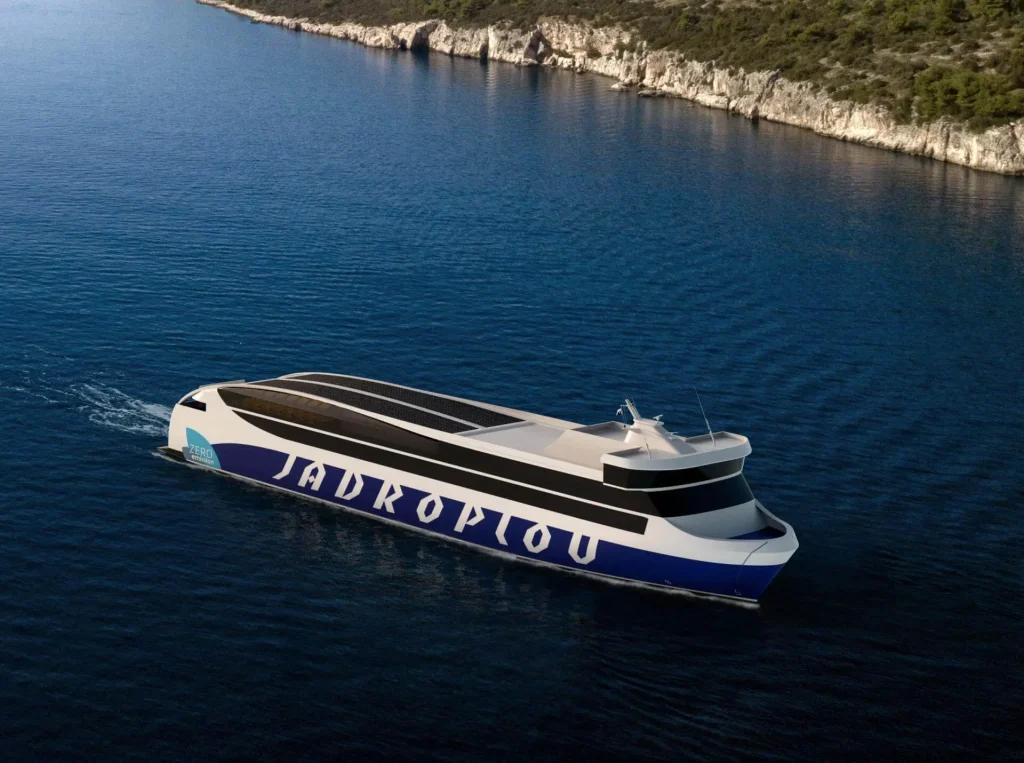Sometime in the spring, the construction of an electric ferry could begin in one of the Croatian shipyards. It would be the first of its kind in Croatia – without harmful gases. The project documentation is nearing completion, with all calculations and model tests.
The prototype was designed by the Split company “Classis.” Predrag Čudina, a ship designer with forty years of experience, told Slobodna Dalmacija more.
“The ship will be built for Split’s “Jadroplov,” with which we have signed a contract for the development of the project. So far, several electric boats have been built in Croatia, but we are talking about the first large Croatian ship to transport a thousand passengers and 156 cars, or about twenty buses and trucks and 89 small vehicles. It is a closed ferry. For the sake of comparison, it is bigger than “Petar Hektorović” from Jadrolinija’s fleet.”
When can we expect to see it in action?
“The project should be ready for the shipyard already in March. And it usually takes two years to build a prototype. So, “Jadroplov” could have this ship as early as 2024 if there are no problems with shipbuilders’ contracts, and we are counting on domestic shipyards.”
How much would this ferry cost?
“It is difficult to project, but roughly 30 million euros.”
Which lines would it run?
“All lines to the central Dalmatian islands, equally those closer and further away, such as Vis or Korcula, not to mention Hvar, Brac or Solta. Of course, it can be done in any other area, but this is the closest to us. For example, the line from Split to Supetar or Rogač can be maintained six times a day in both directions without recharging the battery station. Or, three cruises a day between Split and Stari Grad, or twice to Vis or Vela Luka and back. All with one night charge, since there is less load on the electricity grid at night, and electricity is cheaper.”
Where would the ferry charge?
“The port of Split has a capacity of about ten megawatts, which would be enough to charge three ships at night. Then, of course, a filling station should be built, which should not be a problem in Split, given the existing capacity of the network. Then, finally, three or four megawatts of power should be provided for islands, equivalent to the power needed for 400 households. So it’s not something that should be a problem at night.”
How much does it cost, and how long would it charge?
“24 or 25 megawatts are consumed during the day. This means that if we want to charge the batteries in five hours, we need to have a five-megawatt port. If we charge it for eight hours, then three megawatts of power is enough.”
There is no filling station at the ports. Who would build them?
“Preparatory meetings are already taking place; State bodies, the County Port Authority, and the Split Port Authority are also seriously interested in constructing these stations. So naturally, it counts on financing plants with European money.”
What is the projected capacity of the batteries?
“We have decided for a larger capacity battery. It is more expensive but extends battery life. Today’s lithium-ion can withstand six or seven thousand charge and discharge cycles, or twenty years. If you charge it once a day, the battery will be good for two decades. Charging it five times a day will shorten its life to five years. It is also important that the ferry is completely autonomous during the day and can be tied to any berth in Split. It doesn’t have to go to one that has a charging port.”
What are the advantages over a classic ferry?
“The advantage is zero gas emissions, which is imperative today. And the math is good: lithium-ion battery plants have become ten times cheaper in the last ten years, so today, their price is roughly comparable to the cost of a diesel marine plant. Moreover, they usually come from China or Korea. So, this electric ferry should not be more expensive than the classic one. And the price of a night kilowatt-hour of electricity is up to three times cheaper than a kilowatt-hour from a diesel engine.
In short, for the same sailing speed, the cost of propulsion energy will be several times less than a comparable diesel ship. Of course, maintaining an electric drive is simpler and cheaper than diesel, but it is also less often needed.”
How will the islanders accept an electric boat?
“Here are the arguments: passengers will come to the island or the coast faster and more comfortably. The speed of the ferry is about 15 knots in service. There will be no exhaust on the sun deck, it will have air-conditioned saloons, a bow and a stern ramp for vehicles, so there will be no need to maneuver on board, which is time-consuming. The garage will not be below the main deck, but on it, with two platforms on the side, and there will be no vehicle entry under the deck.
The voyage to Supetar will be fifteen minutes shorter and to Stari Grad up to half an hour, compared to the ships that now maintain these lines. Even bad winter weather should not affect navigation. It has been designed with two swivel stern propulsors and one bow thruster, which allows it to have decisive maneuverability.”
Where else are these ships built?
“In Scandinavia: Denmark, Norway, and Sweden when we talk about Europe, but also in Japan. This niche market will be further developed, especially concerning environmental directives on reducing greenhouse gas emissions. So why not be a part of it: to have our projects and shipyards that can build such ships for domestic and foreign clients.”
Is there money for such projects?
“The recovery and resilience plan, which we hear so much about, probably assumes that the allocated European money in Croatia will be spent on the recovery of the Croatian economy. The current recovery plan includes purchasing three passenger ships and three double hulls. It would be natural for them to be built on Croatian slipways and for some domestic shipyards to master the ability to construct double hulls. To employ our capacities, not just buy abroad.
State Secretary at the Ministry of the Sea Josip Bilaver said at the celebration of Seafarers’ Day in December last year that the European Commission will not allow the spending of the mentioned money to construct ships that have harmful emissions. Therefore, diesel or hybrid drives would not be considered.”
For more, check out our lifestyle section.









